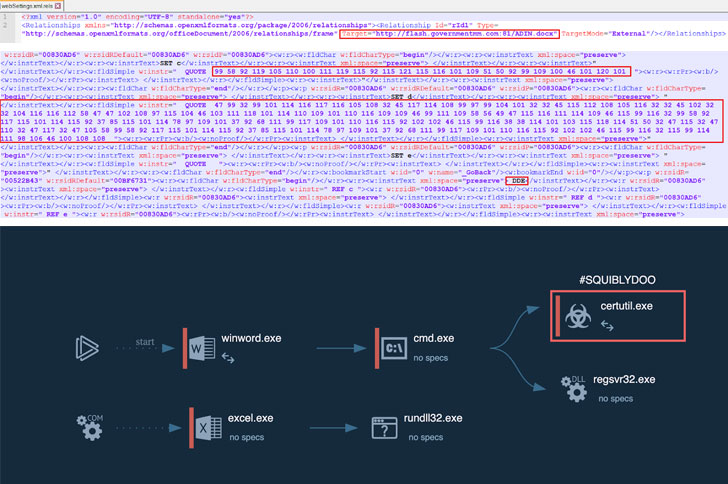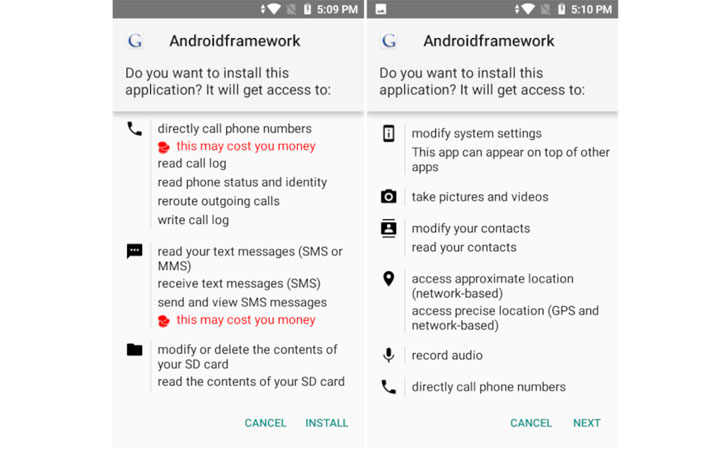An emerging threat actor out of China has been traced to a new hacking campaign aimed at government agencies in India and residents of Hong Kong intending to steal sensitive information, cyber security firm Malwarebytes revealed in the latest report.
The attacks were observed during the first week of July, coinciding the passage of controversial security law in Hong Kong and India’s ban of 59 China-made apps over privacy concerns, weeks after a violent skirmish along the Indo-China border.
Attributing the attack with “moderate confidence” to a new Chinese APT group, Malwarebytes said they were able to track their activities based on the “unique phishing attempts” designed to compromise targets in India and Hong Kong.
The operators of the APT group have leveraged at least three different Tactics, Techniques, and Procedures (TTPs), using spear-phishing emails to drop variants of Cobalt Strike and MgBot malware, and bogus Android applications to gather call records, contacts, and SMS messages.
“The lures used in this campaign indicate that the threat actor may be targeting the Indian government and individuals in Hong Kong, or at least those who are against the new security law issued by China,” the firm said.
Using Spear-Phishing to Install MgBot Malware
The first variant, alerted recipients with the “gov.in” domain stating some of their email addresses had been leaked and that they are to complete a security check before July 5.
The emails come attached with a “Mail security check.docx” purportedly from the Indian Government Information Security Center. Upon opening, it employs template injection to download a remote template and execute a heavily obfuscated variant of Cobalt Strike.
But a day after the aforementioned attack, the operators swapped out the malicious Cobalt Strike payload for an updated version of MgBot malware.
And in the third version seen in the wild, the researchers observed the APT using an entirely different embedded document with a statement about Hong Kong from the UK Prime Minister Boris Johnson allegedly promising to admit three million Hong Kongers to the country.
The malicious commands to download and drop the loader — which are encoded within the documents — are executed using the dynamic data exchange (DDE) protocol, an interprocess communication system that allows data to be communicated or shared between Windows applications.
A RAT With Several Capabilities
The dropped loader (“ff.exe”) masquerades as a Realtek Audio Manager tool and contains four embedded resources, two of which are written in Simplified Chinese.
This, along with the use of DDE and template injection, suggests the campaign could be the handiwork of a China-based threat actor, given the prior history of attacks that took advantage of the same TTPs.
Subsequently, the loader escalates its privileges through a CMSTP bypass before installing the final payload, while also taking steps to avoid detection by debuggers and security software.
To thwart static analysis, “the code is self modifying which means it alters its code sections during runtime,” the researchers said.
“It uses ‘GetTickCount’ and ‘QueryPerformanceCounter’ API calls to detect the debugger environment. To detect if it is running in a virtual environment, it uses anti-vm detection instructions such as ‘sldt’ and ‘cpid’ that can provide information about the processor and also checks Vmware IO ports (VMXH).”
Ultimately, it’s this final malware executable (“pMsrvd.dll”) that’s used to conduct the malicious activities, which it does by posing as a “Video Team Desktop App.”
Not only is the bundled remote administration Trojan (RAT) capable of establishing a connection to a remote command-and-control (C2) server located in Hong Kong, it has the ability to capture keystrokes, screenshots, and manage files and processes.
What’s more, the researchers also found several malicious Android applications as part of the group’s tool set that comes equipped with RAT features, such as audio and screen recording and functions to triangulate a phone’s location and exfiltrate contacts, call logs, SMS, and web history.
Interestingly, it appears this new China APT group has been active at least since 2014, with its TTPs linked to at least three different attacks in 2014, 2018, and March 2020. In all their campaigns, the actor used a variant of MgBot to meet its objectives.
Article Provided By: The Hacker News
![]()
If you would like liquidvideotechnologies.com to discuss developing your Home Security System, Networking, Access Control, Fire, IT consultant or PCI Compliance, please do not hesitate to call us at 864-859-9848 or you can email us at deveren@liquidvideotechnologies.com.




Recent Comments